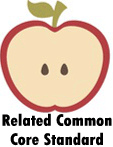Story Analysis Worksheets To Print:
Point of View Pup - Tells us who is telling the story through out the entire work. Read each passage. What is the point of view? If it is third‐person, underline whenever a characters' thoughts or feelings are narrated. Write the letter of the correct answer on the line.
Point of View Mouse - Same idea here, but we include Mrs. Potter in the story. The passages to the right all relate the same event, but each one is told from a different point of view. Read each passage. Identify the point of view and write the letter of the correct answer on the line.
Character Traits - We start to break think like characters here. Reach each short description of an event. Identify a character trait that is revealed by each action. Explain your answer by referencing the text.
Flow Diagram - Diagram out the life of this here story for all students to enjoy. Below is a story diagram. It begins with the inciting event of the story, shows the rising action, the climax, the falling action and the conclusion. On the lines above each one, write a few lines about what is going on at each point in the work.
Goal! - Order the events of the story, after reading it. This is the tale of Kevin's soccer team the Purple People Eaters.
Why the Woodpecker's Head is Red - Map out the entire story here. Includes Author's Purpose, genre, point of view, summary, exposition, rising action, climax, falling action, and resolution.
Be a Book Reviewer - A book reviewer's job is to tell other people about a book so that they can decide whether or not they would like to read it.
Characterization - Read each sentence in the left column. What does it reveal about the character?
The Dogs Next Door - Jonah had the meanest next door neighbor in town, and his mean next door neighbor, as far as Jonah was concerned, had the meanest dogs in the world.
Story Sequence - Read the story, paying particular attention to the order of events. You will be asked to order all the events at the end.
The Story of the First Moles - The order of events is often indicated by signal words. This exercise will help you find those terms and show you where to spot changes.
The Scout - A talent scout for a college basketball team is looking for talented players, but he's also looking for team players.
Implicit Characterizations - Explain how the text you quoted shows the implied character trait.
Inferred Character Traits - Read each sentence in the left column. What does it reveal about the character?
You Have To Read This! - Convince your friend to read a book that you have just finished.
Get FREE English Worksheets In Your Email

